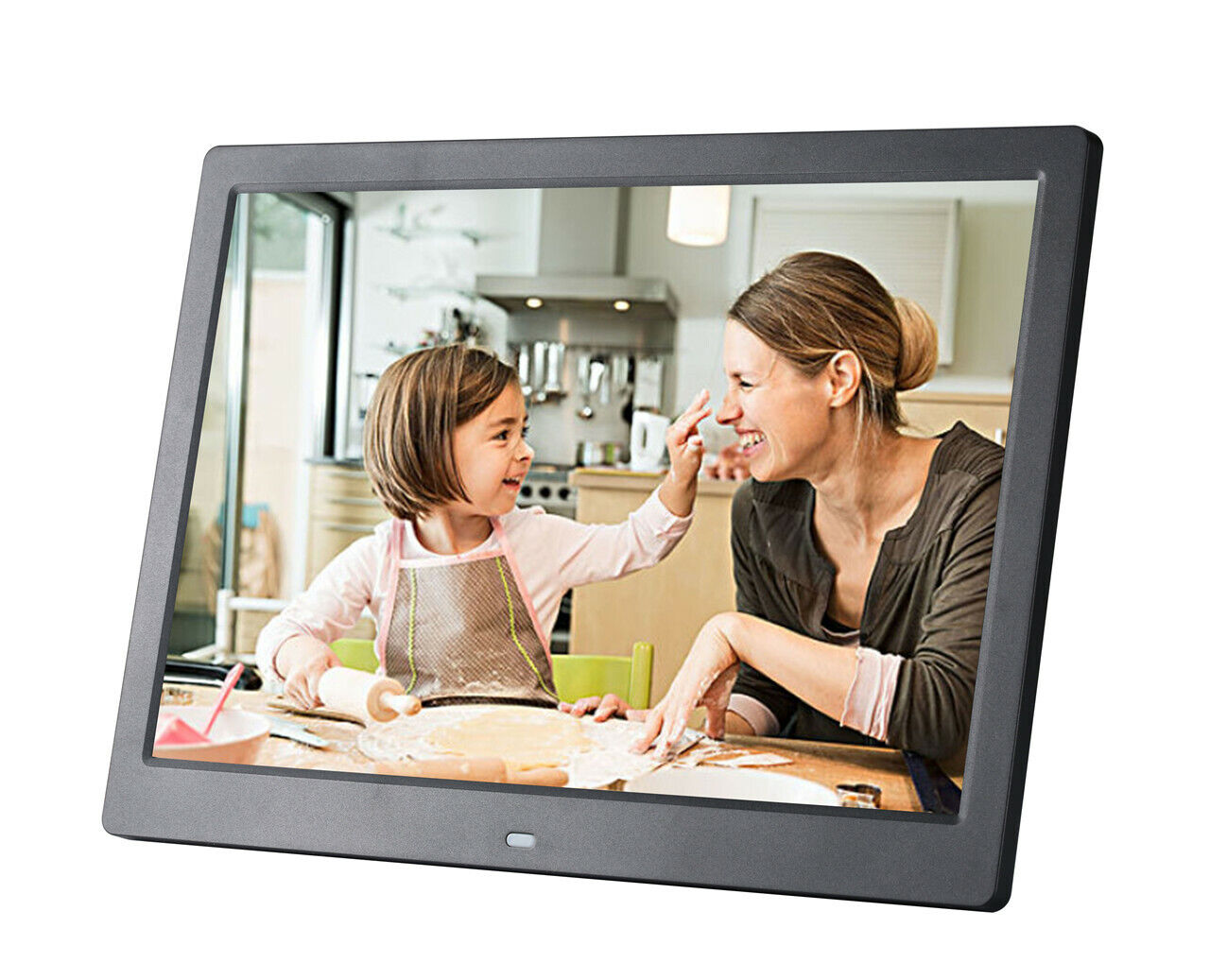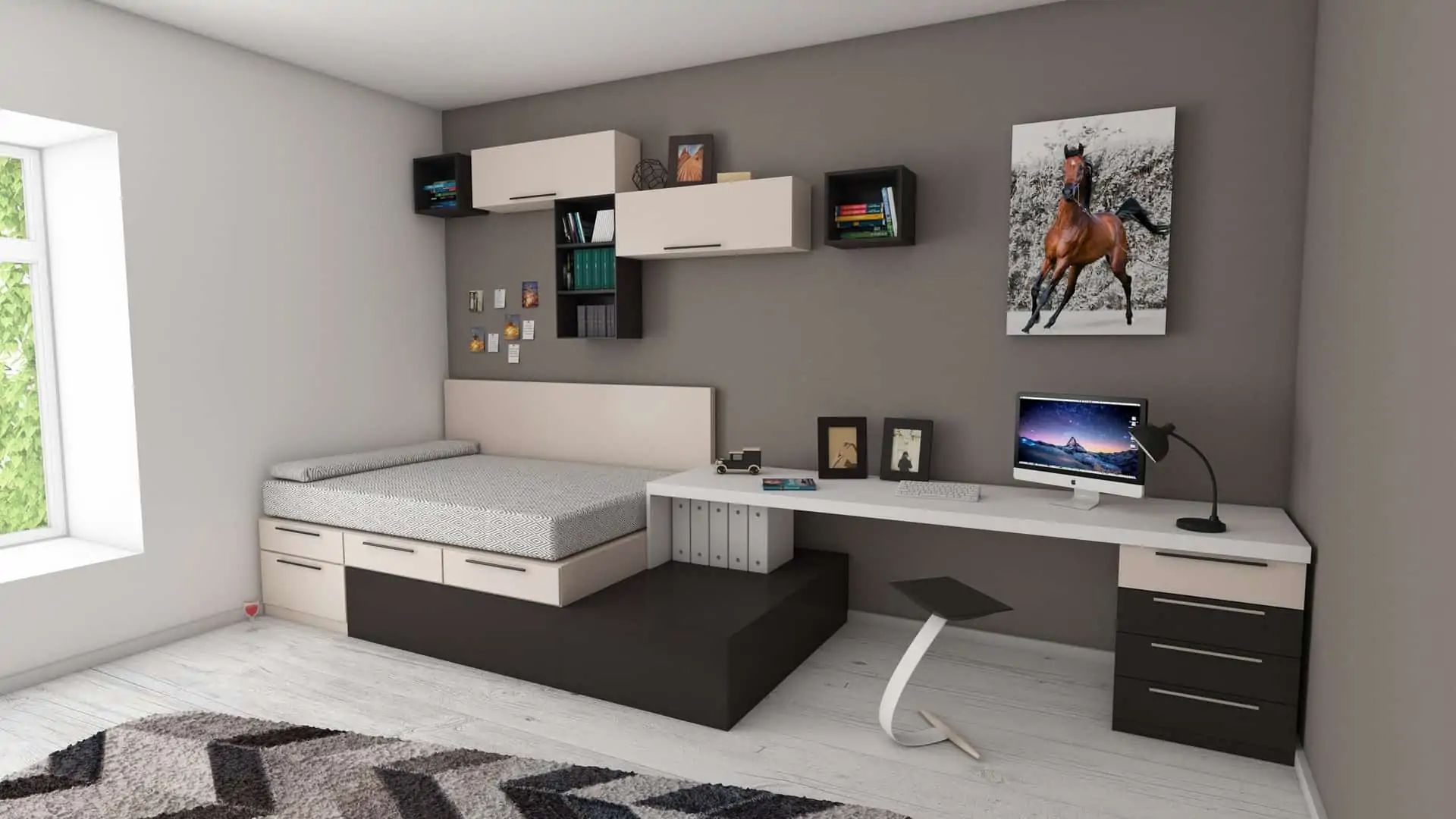Introduction
Welcome to the world of digital memories! In this digital age, photos have become a significant part of our lives, capturing priceless moments and preserving cherished memories. Gone are the days of printing physical copies and placing them in albums. With the advent of technology, we now have the convenience of digital photo frames, which offer a unique and modern way to display our favorite photos.
A digital photo frame is a device that allows you to present a slideshow of your digital images, providing a dynamic and engaging visual experience. It serves as a stylish alternative to traditional picture frames, bringing your photos to life in a more interactive and captivating manner.
Unlike static photo frames, digital photo frames can hold and display hundreds, or even thousands, of pictures. With just a few clicks, you can conveniently upload and arrange your photos, creating personalized slideshows that can be enjoyed by family, friends, and guests.
But how does a digital photo frame actually work? What are the benefits of using one? And how do you choose the right one for your needs? In this article, we will explore the world of digital photo frames, shedding light on their functionality, advantages, and key features to consider when making a purchase. Whether you’re a photography enthusiast or simply want to showcase your fondest memories, a digital photo frame is a modern and stylish addition to any home or office.
What is a digital photo frame?
A digital photo frame is a device designed to display a slideshow of digital images. It is essentially a modern electronic version of a traditional photo frame. Instead of physically inserting and replacing printed photos, you can simply upload your digital images onto the device and enjoy a rotating display of your favorite memories.
These frames typically consist of an LCD or LED screen surrounded by a frame. They come in various sizes, ranging from small tabletop versions to larger wall-mounted options. Some digital photo frames also have additional features like built-in speakers for playing music, Wi-Fi connectivity for accessing online photo albums, and even touchscreen functionality for easy navigation.
One of the key advantages of digital photo frames is their ability to store and display a large number of photos. Unlike traditional frames with limited space, digital photo frames can hold hundreds, and in some cases, thousands of images. This allows you to showcase a diverse range of moments and memories without the need for physical prints or multiple frames.
With a digital photo frame, you have more control over how your photos are displayed. You can set the frame to show a continuous slideshow, choose the duration each image is displayed, and even add transition effects between photos. Some frames also offer features like randomization or the ability to play specific photos on certain days or occasions.
In addition to displaying photos, many digital photo frames offer multimedia capabilities. You can upload and play videos, listen to music, and even view text documents or calendar reminders. This versatility makes digital photo frames a multifunctional device that can enrich your living space.
How does a digital photo frame work?
A digital photo frame operates by utilizing built-in memory or external storage devices, such as USB flash drives or memory cards, to store and display digital images. The frame’s screen, usually an LCD or LED display, is responsible for showcasing the photos.
First, you need to transfer your digital images from your computer or camera to the digital photo frame. This can be done by connecting the frame to your computer via a USB cable or by inserting a memory card or USB drive directly into the frame’s designated ports.
Once the photos are transferred, you can navigate through the frame’s menu using buttons, a remote control, or even a touchscreen, depending on the model. Through the menu, you have the option to organize your photos into folders, create slideshows with specific transition effects and durations, and adjust the display settings such as brightness and aspect ratio.
The digital photo frame continuously reads the stored photos and displays them in a predetermined sequence or according to your selected settings. The frame will automatically transition between the images at the specified time intervals, creating a dynamic and visually engaging slideshow.
Some digital photo frames also offer additional connectivity options, such as Wi-Fi or Bluetooth, which enable you to access online photo albums, streaming services, or even social media platforms. This connectivity allows you to easily update the photos displayed on the frame without the need for physically transferring new files.
Most digital photo frames are designed to support a variety of image formats, including JPEG, PNG, and BMP. Some frames may even offer additional support for video and audio formats, which allows you to add more multimedia elements to your slideshow.
With advancements in technology, some digital photo frames now include motion sensors or timers, ensuring that the frame automatically turns on and off based on your settings. This not only saves power but also ensures that your photos are displayed when you want them to be seen.
Overall, a digital photo frame simplifies the process of displaying and enjoying your digital images. Whether it’s showcasing your vacation photos, capturing precious family moments, or displaying your artistic photography, a digital photo frame offers a convenient and visually appealing way to bring your memories to life.
Benefits of using a digital photo frame
Using a digital photo frame offers several advantages over traditional photo frames, making them an increasingly popular choice for displaying digital images. Here are some key benefits to consider:
1. Versatile and Dynamic Display: Digital photo frames allow you to regularly change the display of your photos without the hassle of printing and framing new pictures. You can easily create and customize slideshows with various transition effects, durations, and even add music or videos, offering a dynamic and visually captivating experience.
2. Space-Saving: With a digital photo frame, you can display hundreds or even thousands of photos without taking up precious wall or shelf space. Unlike traditional frames that can only accommodate a limited number of prints, digital frames allow you to showcase a variety of meaningful moments and memories in one device.
3. Easy to Update: Transferring and updating photos on a digital photo frame is a breeze. You can easily add or remove images by connecting the frame to your computer or inserting a memory card or USB drive. Some frames even offer wireless connectivity, allowing you to access online albums or use apps to directly send photos to the frame.
4. Remote Connectivity: Many digital photo frames offer remote access features, allowing you to remotely upload and manage your photos from anywhere. This is especially convenient for sharing new photos with family and friends, even if they are in a different location.
5. Multimedia Capabilities: Digital photo frames often have built-in speakers and support for playing music, videos, and even displaying text or calendar reminders. This adds an additional layer of versatility, allowing you to create dynamic slideshows with a mix of photos, videos, and audio.
6. Personalized Slideshows: You have complete control over the order, timing, and style of your photo slideshow. Whether it’s chronological, random, or themed slideshows for special occasions, you can easily tailor the display to suit your preferences and create a personalized visual experience.
7. Energy-Efficient: Digital photo frames are designed to be energy-efficient, with most models equipped with features like motion sensors or timers. This ensures that the frame turns on and off automatically, saving power when not in use.
8. Unique Gift Idea: A digital photo frame makes for a thoughtful and unique gift for birthdays, weddings, anniversaries, or any special occasion. It allows recipients to enjoy and reminisce over their favorite memories and brings a touch of modern technology to their living spaces.
In summary, digital photo frames offer a convenient, versatile, and visually captivating way to showcase your digital images. With their customizable slideshows, remote connectivity options, and multimedia capabilities, they provide a modern twist to the traditional photo frame, enabling you to enjoy and share your cherished memories in a dynamic and engaging manner.
Different types of digital photo frames
When it comes to digital photo frames, there are various types available to suit different preferences and needs. Here are some of the common types you can choose from:
1. Standalone Frames: These are the most basic and common type of digital photo frames. They usually have a built-in stand and can be placed on tabletops, desks, or shelves. Standalone frames come in various sizes, ranging from compact 7-inch screens to larger 15-inch screens, allowing you to choose the one that fits your space and display requirements.
2. Wi-Fi Connected Frames: Wi-Fi connected frames offer the convenience of wireless connectivity. They allow you to access online photo storage platforms such as Google Photos, Dropbox, or social media platforms like Facebook and Instagram. These frames often come with companion apps that enable you to send photos directly to the frame from your smartphone or from anywhere with internet access. Wi-Fi connected frames are ideal if you frequently update your photo collection and want to easily upload new pictures.
3. Touchscreen Frames: As the name suggests, touchscreen frames feature a touch-sensitive screen, allowing you to conveniently navigate through menus, select photos, and adjust settings by simply touching the screen. This type of frame offers a more interactive and user-friendly experience, making it easier to browse through your photo collection.
4. Wall-Mounted Frames: Wall-mounted frames are designed to be hung on walls, similar to traditional picture frames. These frames are typically larger in size, with screen sizes ranging from 10 inches to 27 inches or more. They are a great choice if you want to make a bold statement and showcase your photos as a centerpiece in your living room or hallway.
5. Digital Photo Frames with Speakers: Some digital photo frames come with built-in speakers, allowing you to play music or videos along with your photo slideshow. This adds an extra dimension to your visual experience, creating a more immersive and engaging display.
6. Portable Frames: Portable frames are compact and lightweight, making them easy to carry and move around. These frames often run on batteries, allowing you to enjoy your photos on the go or in different locations without the need for a power outlet.
7. High-Resolution Frames: For those who prioritize image quality and clarity, high-resolution frames are an excellent choice. These frames feature screens with higher pixel densities, resulting in sharper and more vibrant image reproduction. They are ideal for displaying high-resolution photos and artwork.
8. Multi-Frame Displays: Multi-frame displays consist of two or more screens connected together, allowing you to create unique arrangements and display multiple photos simultaneously. This type of frame is perfect if you want to showcase an extensive collection of photos or create visually striking collages.
With the variety of digital photo frames available, you can choose the type that best fits your style, space, and usage preferences. Consider your specific needs and desired features to find the perfect frame that will beautifully showcase your digital memories.
Features to consider when purchasing a digital photo frame
When purchasing a digital photo frame, it’s important to consider various features that will enhance your viewing experience and meet your specific needs. Here are some key features to consider:
1. Screen Size and Resolution: The screen size and resolution are crucial factors that determine the quality and clarity of your photo display. Larger screens, typically ranging from 7 to 15 inches or more, are ideal for showcasing your photos in detail. Look for frames with high resolutions, such as 1024×768 or higher, to ensure sharp and vibrant image reproduction.
2. Internal Memory and External Storage: Check the internal memory capacity of the digital photo frame, as this will determine how many photos you can store directly on the frame. A frame with larger internal memory will allow you to store more photos without the need for external storage. Additionally, consider frames that support external storage options like USB drives, SD cards, or Wi-Fi connectivity for accessing online photo albums.
3. Remote Connectivity: Wi-Fi or Bluetooth connectivity enables remote access and control of your digital photo frame. This allows you to easily update and manage your photo collection by sending photos directly to the frame from your smartphone, computer, or online storage platforms. Remote connectivity makes it convenient to keep your frame up to date with your latest memories.
4. Slideshow Customization: Look for frames that offer a range of slideshow customization options. These include features like transition effects, adjustable durations, randomization, and music or video playback capabilities. Customizing the slideshow allows you to personalize the display to your liking and create unique and engaging visual experiences.
5. Display Settings: Consider frames with adjustable display settings, such as brightness, contrast, and aspect ratio. These settings ensure that your photos are displayed optimally in different lighting conditions and can be adjusted to fit your personal preferences.
6. Touchscreen, Buttons, or Remote Control: Consider the interface options available on the digital photo frame. Frames with touchscreens offer intuitive navigation and let you easily select and navigate through your photos. Alternatively, frames with buttons or remote controls are more traditional and may be preferred by those who prefer physical buttons for control.
7. Multimedia Support: If you want to add more than just photos to your slideshow, look for frames that support multimedia formats. This includes playing videos and music alongside your photo display. Some frames even support displaying text pages or calendar reminders, adding extra functionality to your frame.
8. Design and Aesthetics: Consider the design and aesthetics of the digital photo frame, as it will be a prominent addition to your living space. Look for frames that match your personal style and complement your home’s interior. You can choose from a variety of frame materials, finishes, and styles to find one that suits your taste.
9. Power Saving Features: Energy-efficient frames with features like motion sensors or timers can save power when the frame is not in use. These features ensure that the frame turns on and off automatically, helping to conserve energy and prolong battery life.
By considering these features, you can select a digital photo frame that fits your preferences and requirements, allowing you to showcase and enjoy your digital memories in the best possible way.
How to choose the right digital photo frame for your needs
Choosing the right digital photo frame can enhance your photo viewing experience and ensure that it meets your specific needs. Here are some essential factors to consider when selecting a digital photo frame:
1. Determine your Purpose: Consider how you plan to use the digital photo frame. Are you looking for a frame to display family photos at home, or do you need a portable frame to take with you on travels? Identifying your purpose will help you narrow down the type and features you require.
2. Screen Size and Resolution: The screen size and resolution determine the quality of your photo display. Consider how large you want the frame to be and ensure that the resolution is high enough to showcase your photos in sharp detail. Larger screens are ideal for larger rooms or wall-mounted displays, while smaller frames are great for desks or bedside tables.
3. Storage Capacity: Evaluate how many photos you want to store directly on the frame and consider frames with sufficient internal memory or support for external storage options like USB drives or memory cards. If you frequently update your photos, look for frames with Wi-Fi connectivity to access online albums or send photos wirelessly.
4. Connectivity Options: Depending on your preferences, look for frames with connectivity options that suit your needs. Wi-Fi or Bluetooth connectivity allows for easy remote access and photo updates, while USB or memory card slots provide convenient ways to transfer and display photos.
5. User Interface: Consider the user interface of the digital photo frame. Touchscreen frames offer ease of navigation and control, while frames with buttons or remote controls provide a more traditional approach. Choose the interface that you find most intuitive and convenient to use.
6. Slideshow Customization: Look for frames that offer a range of options to customize your photo slideshow. This includes features like transition effects, adjustable durations, and the ability to add music or videos to the slideshow. Customization features allow you to create personalized and engaging displays.
7. Design and Aesthetics: Consider the design and aesthetics of the frame, as it will be a visual element in your living space. Choose a frame that matches your personal style and complements the decor of your home or office. This ensures that the frame seamlessly fits into your environment.
8. Power Saving Features: Energy-efficient frames with power-saving features can extend battery life and reduce energy consumption. Look for frames with motion sensors or timers that automatically turn on and off, optimizing power usage when the frame is not in use.
9. Price and Brand: Set a budget for your digital photo frame purchase and consider reputable brands known for their quality and reliability. Compare prices and features to find the best value for your money.
By considering these factors, you can choose a digital photo frame that meets your specific needs, enhances your photo viewing experience, and seamlessly integrates into your lifestyle and home decor.
How to set up a digital photo frame
Setting up a digital photo frame is a straightforward process that allows you to start enjoying your favorite photos in no time. Here are the basic steps to set up a digital photo frame:
1. Unboxing: Begin by carefully unboxing your digital photo frame and removing any protective packaging.
2. Powering the Frame: Connect the frame to a power source using the provided power adapter or batteries, depending on the type of frame you have. Plug the adapter into a power outlet or insert the batteries into the designated compartment.
3. Inserting Storage Devices: If your digital photo frame supports external storage devices, insert a memory card or USB drive containing your photos into the appropriate slot on the frame.
4. Powering On: Switch on the digital photo frame using the power button, typically located either on the frame itself or on the remote control.
5. Language and Time Settings: Follow the on-screen prompts to select your preferred language and set the correct date and time. This step may vary slightly depending on the model of your digital photo frame.
6. Navigating the Menu: Once the frame is powered on, use the buttons, touchscreen, or remote control to navigate through the menu options. Familiarize yourself with the various settings and options available.
7. Transferring Photos: Connect your digital photo frame to your computer using a USB cable, or insert a memory card or USB drive containing your photos into the appropriate slot on your computer. Transfer your desired photos to the frame by either copying and pasting the files or dragging and dropping them into the frame’s memory or external storage device.
8. Organizing Photos: If desired, create folders on the digital photo frame to organize your photos into specific albums or categories. This can help you easily navigate and access your photos on the frame.
9. Slideshow Settings: Access the frame’s settings menu and customize your desired slideshow settings. This includes options such as transition effects, duration per photo, randomization, or adding background music or videos to the slideshow.
10. Mounting or Displaying: Depending on the type of digital photo frame you have, mount it on a wall using the appropriate brackets or stands, or simply place it on a tabletop or shelf. Ensure that the frame is securely in place and positioned for optimal viewing.
11. Enjoying the Slideshow: Sit back, relax, and enjoy your personalized photo slideshow on the digital photo frame. The frame will automatically cycle through your chosen photos based on the settings you’ve selected.
Setting up a digital photo frame is a simple and enjoyable process that allows you to showcase and relive your favorite memories in a dynamic and visually pleasing manner.
Tips for displaying photos on a digital photo frame
Displaying photos on a digital photo frame offers a great way to showcase your favorite memories and enhance your living space. Here are some helpful tips to ensure an optimal and enjoyable experience:
1. Choose High-Quality Images: Prioritize high-resolution images for the best display quality on your digital photo frame. Images with higher resolutions will appear sharper and more vibrant on the screen.
2. Consider Image Orientation: Take note of the orientation of your photos and make any necessary adjustments to ensure they display correctly on the frame. Some frames may automatically rotate images based on their embedded orientation data, while others may require manual rotation.
3. Organize Photos into Folders: Organize your photos into different folders or albums on the digital photo frame. This makes it easier to find specific photos or create themed slideshows based on different events or occasions.
4. Customize Slideshow Settings: Take advantage of the slideshow customization options provided by the digital photo frame. Experiment with different transition effects, slide durations, and randomization settings to create a dynamic and visually appealing slideshow.
5. Add Music or Videos: If your digital photo frame supports multimedia formats, consider adding background music or even videos to your photo slideshow. This can further enhance the viewing experience and create a more immersive display.
6. Regularly Update Your Photos: Keep your photo collection fresh and engaging by regularly updating the images on your digital photo frame. Swap out old photos for new ones to reflect recent memories and experiences.
7. Backup Your Photos: Make sure to keep backups of your photos on your computer or external storage devices. In case of accidental deletion or loss, having backups ensures that your precious memories are preserved.
8. Adjust Display Settings: Take the time to adjust the display settings on your digital photo frame to achieve the best image quality. Experiment with brightness, contrast, and aspect ratio settings to optimize the display for your viewing environment.
9. Clean the Screen: Regularly clean the screen of your digital photo frame to remove any dust or fingerprints that may affect image clarity. Use a soft, lint-free cloth to gently wipe the screen and keep it looking pristine.
10. Consider Frame Placement: Carefully consider where you place your digital photo frame to ensure maximum visibility and enjoyment. Choose a location that is easily accessible and where the frame can be viewed comfortably by yourself and others.
11. Personalize the Frame: If possible, customize the frame itself to reflect your personal style. Some frames offer interchangeable frames or skins that allow you to match the frame to your home decor or personal preferences.
By incorporating these tips, you can maximize the impact of your digital photo frame and create a visually stunning display of your cherished memories.
Conclusion
Digital photo frames have revolutionized the way we display and enjoy our favorite memories. These modern devices offer a versatile and dynamic alternative to traditional photo frames, allowing us to showcase a multitude of photos in a captivating and customizable slideshow format.
With their range of features and options, digital photo frames have become an essential piece of technology for photography enthusiasts, families, and individuals looking to add a personal touch to their living spaces. The ability to easily update and organize our photo collections, create personalized slideshows, and even play music or videos alongside the photos adds a new dimension to the way we relive our memories.
When choosing a digital photo frame, it’s important to consider factors such as screen size, resolution, storage capacity, connectivity options, and slideshow customization. By understanding our specific needs and preferences, we can select a frame that best suits our requirements, ensuring an optimal viewing experience.
Setting up a digital photo frame is a straightforward process that involves connecting the frame to a power source, transferring photos, customizing slideshow settings, and positioning the frame in an ideal location. With these steps, we can effortlessly create a captivating display of our cherished memories in a digital format.
By following tips such as selecting high-quality images, organizing photos into folders, customizing slideshow settings, and regularly updating our photo collection, we can make the most of our digital photo frame and create a visually stunning display that brings our memories to life.
Overall, digital photo frames offer a convenient, versatile, and visually appealing way to showcase and relive our favorite memories. Whether it’s displaying family photos, vacation snapshots, or artistic photography, these frames provide a modern twist to traditional picture frames, allowing us to enjoy and share our cherished moments in an engaging and dynamic manner.

























